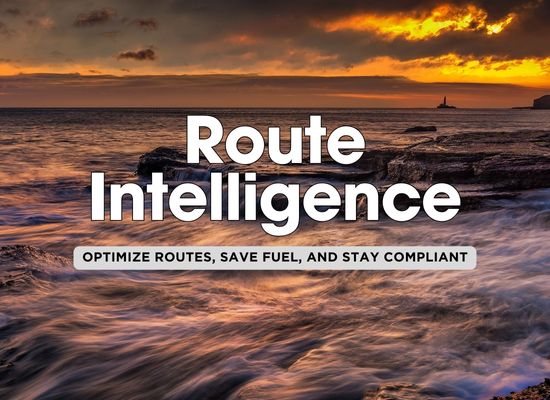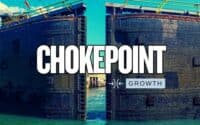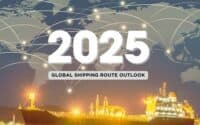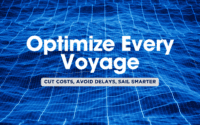How to Save 20% on Fuel Costs with Weather Routing Software

Weather routing software is redefining how shipowners plan their voyages, delivering substantial cost savings and optimizing every nautical mile. By leveraging real-time weather data, AI algorithms, and vessel-specific parameters, this cutting-edge technology creates routes that are not only safer but also far more fuel-efficient.
Why Weather Routing Matters
- 🌩️ Avoid Costly Delays: Dodge storms and rough seas that can slow you down and drive up fuel costs.
- 🌊 Ride the Currents: Optimize your route to take advantage of favorable ocean currents.
- ⚡ Cut Fuel Costs by Up to 20%: Efficient routing minimizes fuel consumption, saving thousands—even millions—annually.
- 🌍 Stay Compliant: Navigate environmentally sensitive areas (like ECA zones) while reducing emissions and meeting IMO regulations.
How It Works
- Real-Time Data Integration: Combines up-to-the-minute weather reports with route planning tools.
- AI-Powered Optimization: Dynamically adjusts routes for speed, safety, and cost efficiency.
- Tailored for Your Vessel: Factors in ship type, cargo load, and fuel consumption patterns.
A Game-Changer for Shipowners
Imagine avoiding a brewing storm in the Atlantic and saving $30,000 in fuel on a single voyage. Or shaving days off a route by tapping into powerful ocean currents. Weather routing software delivers this and more, making it an indispensable tool for modern fleets.
How Does Weather Routing Save Fuel? 🌍⚡
Weather routing software is a powerful tool that combines real-time data with advanced algorithms to minimize fuel consumption and improve operational efficiency. Here’s a breakdown of the key mechanisms that make this technology a game-changer for shipowners:
🌩️ Avoiding Adverse Weather
- Storms, high winds, and rough seas increase resistance and drag, causing engines to work harder and burn more fuel.
- Weather routing software identifies routes that bypass severe weather, ensuring smoother sailing and reducing energy consumption.
- Result: Up to 10% fuel savings on storm-prone routes.
🌊 Leveraging Ocean Currents
- By strategically planning routes to align with natural ocean currents, vessels can use these powerful forces to boost speed and reduce fuel needs.
- Popular currents like the Gulf Stream can significantly enhance efficiency without additional engine power.
- Result: Savings of 3-5% by riding favorable currents.
⚡ Optimizing Speed and Engine Usage
- Weather routing software calculates the optimal speed for a voyage, ensuring fuel is used efficiently without overworking the engines.
- By adjusting speed dynamically based on weather and expected arrival times, the software eliminates the need for "hurry up and wait" scenarios at ports.
- Result: Consistent savings of 2-3% by maintaining efficient speeds.
🚦 Reducing Delays and Detours
- Delays caused by unforeseen weather or inefficient planning can lead to detours that waste fuel and time.
- Weather routing tools analyze real-time conditions and adjust the route to avoid unnecessary deviations.
- Result: Shorter travel times and lower fuel consumption, adding up to 5-7% savings.
| ShipUniverse: Quick Comparison of Savings Factors | ||
|---|---|---|
| Savings Factor | How It Works | Estimated Savings |
| Avoiding Adverse Weather | Reroutes ships around storms, high winds, and rough seas, reducing drag and fuel consumption. | 5-10% |
| Leveraging Ocean Currents | Optimizes routes to align with powerful ocean currents like the Gulf Stream, reducing engine strain and improving speed. | 3-5% |
| Optimizing Speed and Engine Usage | Calculates ideal speeds based on weather, cargo, and ETA to maximize efficiency without overworking engines. | 2-3% |
| Reducing Delays and Detours | Minimizes time wasted on route changes, detours, or waiting at congested ports by dynamically adjusting paths. | 5-7% |
| Minimizing Idle Time at Ports | Coordinates arrival times with port schedules to avoid idling, reducing fuel waste. | 2-4% |
| Reducing Hull Resistance from Waves | Routes planned to avoid large waves that increase drag and fuel use, especially for smaller vessels. | 2-3% |
| Temperature and Wind Optimization | Adjusts routes to avoid headwinds and extreme temperatures, focusing on leveraging tailwinds for smoother sailing. | 2-5% |
| Seasonal Route Adjustments | Incorporates seasonal weather patterns to select consistently efficient routes and reduce ad-hoc adjustments. | 3-6% |
| Customization for Vessel and Cargo Type | Tailors routing decisions based on vessel capabilities, cargo type, and delivery requirements to optimize overall performance. | Variable (1-5%) |
Key Features to Look for in Weather Routing Software
Choosing the right weather routing software can make all the difference in achieving maximum fuel efficiency and operational reliability. Shipowners should focus on tools that not only deliver accurate data but also integrate seamlessly with existing systems and adapt to the unique needs of their fleet. Below are the critical features to prioritize:
Critical Features for Weather Routing Software
- Real-Time Updates
- Essential for responding to rapidly changing weather conditions during voyages.
- Helps avoid delays and ensures continuous optimization of routes.
- Integration with Onboard Systems
- Streamlines communication between the routing software and navigation, fuel monitoring, and engine control systems.
- Ensures a holistic approach to efficiency and safety.
- Port Congestion Insights
- Allows for better timing of arrivals, minimizing idle time at ports.
- Reduces unnecessary fuel consumption from waiting or rerouting.
- Customization for Ship Type and Cargo
- Tailors recommendations based on vessel capabilities, cargo sensitivity, and delivery priorities.
- Maximizes efficiency while protecting high-value or time-sensitive shipments.
| ShipUniverse: Key Features of Weather Routing Software | |||
|---|---|---|---|
| Feature | Why It Matters | How It Works | Benefits |
| Real-Time Updates | Immediate route adjustments ensure ships avoid adverse weather conditions, reducing delays and fuel costs. | Uses satellite data and predictive models to monitor and forecast weather patterns, providing instant re-routing options. |
|
| Integration with Onboard Systems | A unified system ensures all data sources—navigation, fuel monitoring, and engine performance—work together for optimal decision-making. | Connects through APIs or direct interfaces with ship systems, centralizing data for seamless analysis and execution. |
|
| Port Congestion Insights | Accurate predictions of port traffic help optimize arrival times, avoiding unnecessary idling and fuel waste. | Analyzes historical port congestion data combined with real-time traffic updates to predict berth availability. |
|
| Customization for Ship Type and Cargo | Tailored routes and speed adjustments maximize operational efficiency based on the vessel’s design and cargo requirements. | Allows input of vessel-specific parameters such as draft, engine performance, and cargo type to fine-tune routing recommendations. |
|
Costs vs. ROI of Weather Routing Software 💰🌊
Investing in weather routing software is a strategic decision that balances upfront costs with significant operational savings. For most shipowners, the potential fuel savings of up to 20% per voyage far outweigh the initial expense, making this technology one of the most cost-effective upgrades available. Here’s what to expect:
💻 Typical Costs
- Subscription-Based Pricing
- Most weather routing software is offered as a subscription model to ensure continuous updates and access to the latest weather data.
- Cost Range: $10,000 to $50,000 per year, depending on the software's features, the fleet size, and the level of customization.
- Best For: Shipowners who want predictable annual costs and regularly updated data without committing to large upfront expenses.
- One-Time Licenses
- Some providers offer a one-time purchase option, where the software is bought outright, and updates are purchased separately.
- Cost Range: $50,000 to $150,000 upfront, plus annual fees for updates or support.
- Best For: Large fleets looking for long-term savings and the ability to control when updates are implemented.
⚡ ROI: How Quickly Does It Pay Off?
- Fuel Savings: With savings of 5-20% on fuel per voyage, most shipowners recover their investment within 6 months to 2 years, depending on the ship type and operational profile.
- Example: A container ship spending $1,000,000 annually on fuel could save $100,000 to $200,000 each year by implementing weather routing software.
- Operational Efficiency: Reductions in delays, idle time at ports, and maintenance costs provide additional financial benefits.
- Environmental Compliance: Avoiding fines related to emissions or non-compliance with IMO standards can also improve ROI.
🎯 Key Factors Impacting ROI
- Voyage Length: Long-haul routes yield higher savings due to more opportunities for optimization.
- Fuel Costs: ROI accelerates when fuel prices are high, amplifying the percentage-based savings.
- Fleet Size: Larger fleets can distribute costs across multiple vessels, improving overall value.
🚀 Maximizing Your ROI
- Start Small: Pilot the software on a single vessel to gauge savings before rolling it out fleet-wide.
- Leverage Vendor Support: Many providers offer onboarding assistance to ensure crews utilize the software effectively.
- Integrate with Existing Tools: Combining weather routing with fuel monitoring systems and voyage optimization software enhances the overall savings potential.
| ShipUniverse: Potential ROI for Weather Routing Software | ||||
|---|---|---|---|---|
| Voyage Type | Annual Fuel Costs (Without Software) | Potential Savings (%) | Annual Savings (With Software) | Estimated Payback Period |
| Short-Haul Coastal (e.g., 500 miles) | $250,000 | 5-10% | $12,500 - $25,000 | 1-2 years |
| Mid-Range Regional (e.g., 1,500 miles) | $750,000 | 7-15% | $52,500 - $112,500 | 6-12 months |
| Long-Haul Global (e.g., Trans-Pacific) | $1,500,000 | 10-20% | $150,000 - $300,000 | 3-6 months |
| Large Fleet (10 vessels, mixed routes) | $10,000,000 | 8-18% | $800,000 - $1,800,000 | 2-4 months |
Challenges and Considerations with Weather Routing Software 🌊💻
While weather routing software offers substantial benefits, implementing it isn’t without its challenges. Shipowners should consider the following potential barriers and adopt strategies to mitigate them:
Key Challenges
- Upfront Costs
- Initial investment in software licenses or subscriptions can be significant, especially for smaller fleets.
- Tip: Start with a pilot program on one vessel to evaluate savings before scaling up fleet-wide.
- Dependence on Data Accuracy
- Weather routing relies heavily on real-time and predictive data; inaccurate or delayed inputs can reduce its effectiveness.
- Tip: Choose software providers with a proven track record of reliable data and robust satellite coverage.
- Crew Training and Adoption
- Ensuring the crew understands and uses the software correctly is essential for maximizing ROI.
- Tip: Invest in training sessions and ongoing support to help crews integrate the technology into daily operations.
| ShipUniverse: Comprehensive Challenges and Solutions for Weather Routing Software | ||
|---|---|---|
| Challenge | Details | Solution |
| Upfront Costs | High initial investment for software licenses or subscriptions can be a barrier, especially for smaller operators. |
|
| Dependence on Data Accuracy | Inaccurate or delayed weather data can compromise route planning and reduce fuel savings. |
|
| Crew Training and Adoption | Crew may lack familiarity with the software, limiting its effectiveness and adoption. |
|
| Integration with Existing Systems | Poor integration with existing systems like fuel monitoring or navigation tools can create inefficiencies. |
|
| Initial Implementation Complexity | Setting up and customizing the software to meet fleet-specific needs can be time-intensive. |
|
| Internet Connectivity and Data Transmission | Dependence on stable internet connectivity for real-time updates can be challenging in remote areas. |
|
| Cost Justification for Short-Haul Routes | Shorter routes may yield smaller savings, making it harder to justify the investment. |
|
Take the Next Step Toward Smarter Navigation 🌍⚡
Weather routing software isn’t just an upgrade—it’s a game-changer. By optimizing fuel consumption, reducing emissions, and improving operational efficiency, this technology delivers both cost savings and environmental benefits that no shipowner can afford to overlook.
Why Weather Routing is Worth It
- 💰 Save Money: Cut fuel costs by up to 20% per voyage, with ROI often achieved in as little as 6 months.
- 🌊 Sail Smarter: Navigate adverse weather, leverage ocean currents, and optimize speed for seamless operations.
- 🌍 Meet Environmental Goals: Stay ahead of IMO regulations, reduce your fleet’s carbon footprint, and demonstrate a commitment to sustainability.
- 🚢 Enhance Fleet Efficiency: Avoid delays, improve port arrival timing, and keep your crew and cargo safe.
Start Your Journey Today
Weather routing software is an investment that pays for itself—both in financial savings and in long-term sustainability. To get started:
- Research Providers: Compare the features, pricing, and reliability of leading software solutions.
- Test the Waters: Begin with a trial on one vessel to measure savings and ensure seamless integration.
- Scale Up: Once you’ve seen the benefits, roll out the solution fleet-wide to maximize results.
🌐 Your Next Move
The future of maritime efficiency is here. Take the first step by exploring the latest weather routing software solutions and making smarter navigation decisions today. 🚢✨
Weather Routing Software Providers
| ShipUniverse: Comprehensive Weather Routing Software Providers | ||
|---|---|---|
| Provider | Key Features | Best For |
| StormGeo | Real-time updates, voyage optimization, port congestion data | Large fleets needing robust, scalable solutions for global routes |
| Wärtsilä | Integrated weather routing, voyage optimization, and just-in-time port arrivals | Operators seeking end-to-end operational optimization and sustainability |
| SPOS Seaware | Fuel efficiency analytics, route optimization, offline capabilities | Vessels operating in areas with limited connectivity |
| Navis Voyage Optimizer | Dynamic route adjustments, integration with fuel monitoring systems | Fleet operators seeking seamless integration with other Navis products |
| Weathernews Inc. | Real-time alerts, typhoon tracking, route optimization | Operators in Asia-Pacific regions with frequent severe weather |
| PredictWind | High-resolution weather forecasts, offshore data | Smaller vessels and private operators prioritizing cost-effective options |

Do you have a Maritime Product or Service that may be of interest to Shipowners? Tell us about it here!
Do you have feedback or insights? Please reach out to editor @ shipuniverse.com



